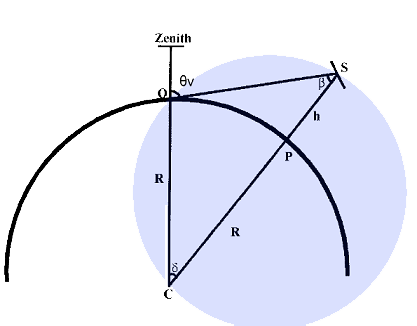Approximating the view zenith (VZA) and azimuth (VAA) angles of polar orbiting satellites ...Niu et al.'s algorithm...
Earth Observation from space allows the monitoring of radiation signatures of dynamic surface variables. These variables characterize various earth process, e.g., the water, energy and carbon cycles. Inherently, remote sensors will view a terrestrial pixel from a specific direction/angle each overpass time. This will depend on the satellite's position relative to the pixel. In many RS applications, these viewing angles need to be considered for a correct interpretation of signal acquisitions. View angles provided with most RS products are often calculated using proprietary [and probably more exact] algorithms. Niu et al. (2001) developed a simple algorithm for calculating the view angles (with good accuracy) of polar orbiters. Such an algorithm can easily be applied when performing synthetic experiments.
